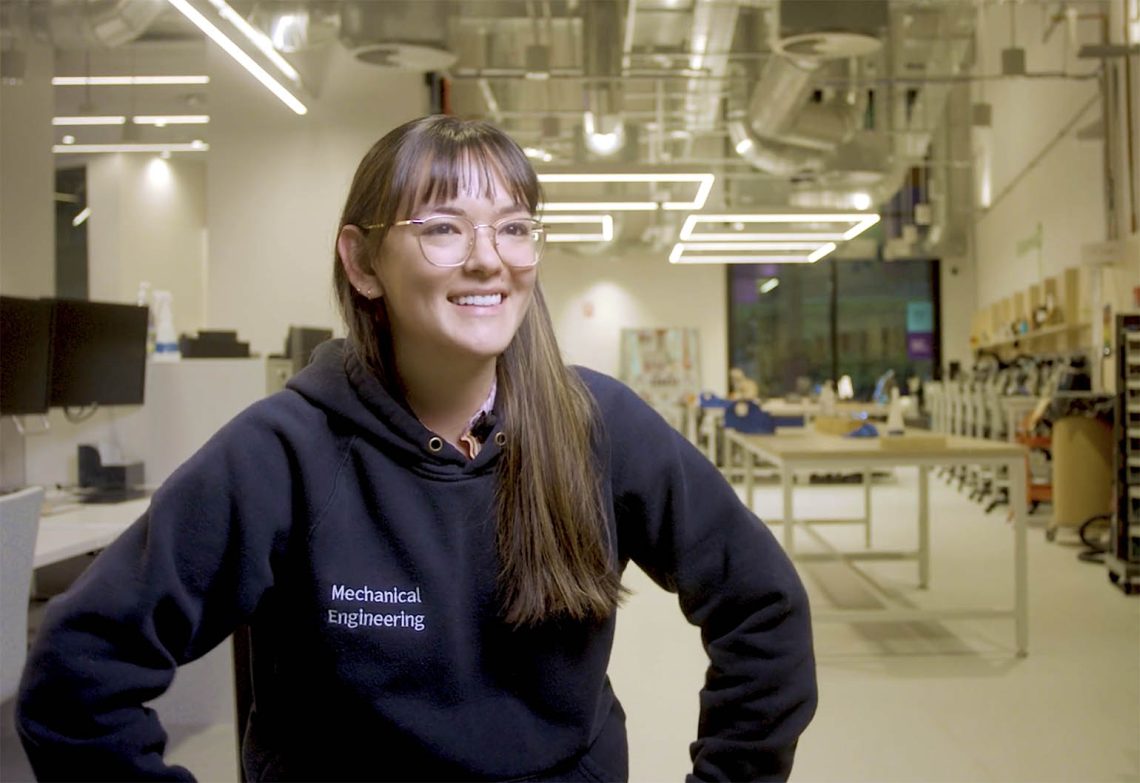Grace Brown, co-founder of Andromeda and winner of Vogue Codes Future Innovators Award for 2021, explains her passion for engineering.
A recent graduate from University of Melbourne in mechatronics, Brown is leading a team building Abi, a bipedal humanoid robot designed to be a companion robot for residents in aged care facilities.
“I love being an engineer because of the creative aspect,” she said. “A lot of people wouldn’t consider engineering as a creative industry, but I do think that there’s a really big shift that’s currently happening.”
For Brown, building characterisation into robotic technology is a way to let her creativity flourish.
Abi will be able to carry out simple tasks in a hospital setting, but also act as a companion that can respond to conversation and give hugs.
“I like to compare myself to studio animators. What they do really, really well is draw characters through either sketches on papers or computer aided drawings,” she said.
It may come as no surprise that the inspiration for her startup is Baymax, a companion robot from Disney film Big Hero 6. As an undergraduate, Brown successfully pitched her idea to the Melbourne Space Program and recruited a team to help begin its development.
“Animators are able to use their characters and elicit really strong emotional responses from the audiences, and in that you believe to some extent that the characters are real,” she said.
“Why I love what I’m doing is because we are trying to build a character, we’re trying to build personality through robotics.”
A day in the life
Brown and her team have extended creativity to their work schedule.
“We have our team meetings on Saturdays,” she said. “It’s the only time that everyone happens to be free.”
When it comes to her everyday workload, she said that she splits it into technical and non-technical.
“The technical work is where I’m actually physically building Abi. So that could include doing CAD drawings and Fusion, programming her motors and actuators or other electronic components, programming the chatbot,” she said.
“The other, non-technical side of things would be the meetings with different investors, mentors, academics, even customers as well, such as aged care facilities.”
Looking ahead to the future
Brown explained that her journey in STEM comes from a life-long love of mathematics.
“What inspired me to do engineering was the more practical aspects of it compared to maths. At heart, I’m a problem solver and a builder — the definition of most engineers,” she said.
“I’ve always loved tinkering with things, building things. I built my own 3D printer, I built my own electric skateboard. Engineering seemed like a very natural path to consider.
“Pure maths is extremely abstract. In a lot of ways, you can’t really see how to apply abstract maths in a real life setting.”
While Brown may have her hands full with Abi for now, she’s prepared to cast one eye towards the future.
“In five years, I hope that we will have built the fourth or fifth commercial prototype of Abi. She would have been mass manufactured, she would have been adopted by say 5 percent of households in Australia,” she said.
“And I’ll be living in Silicon Valley with my co-founder, building the next robot conglomerate.”



